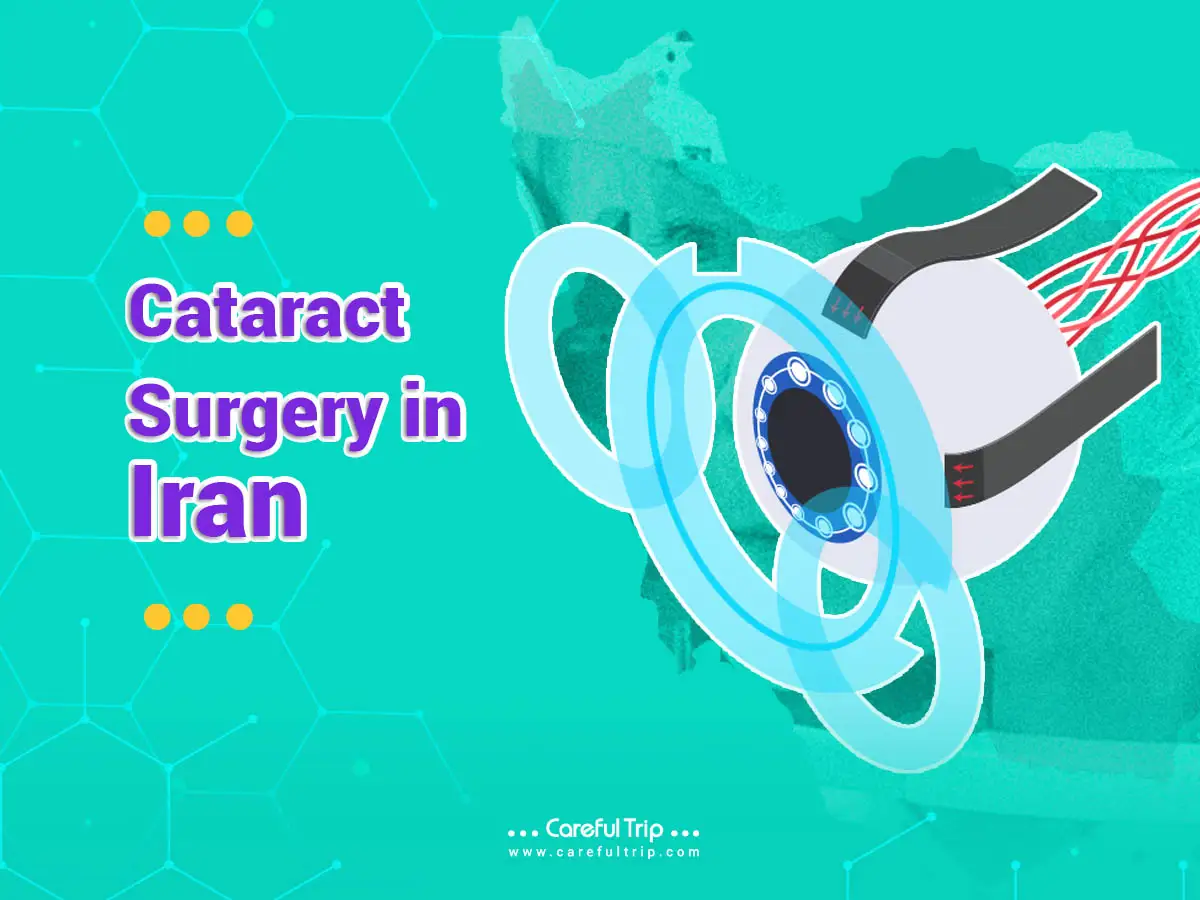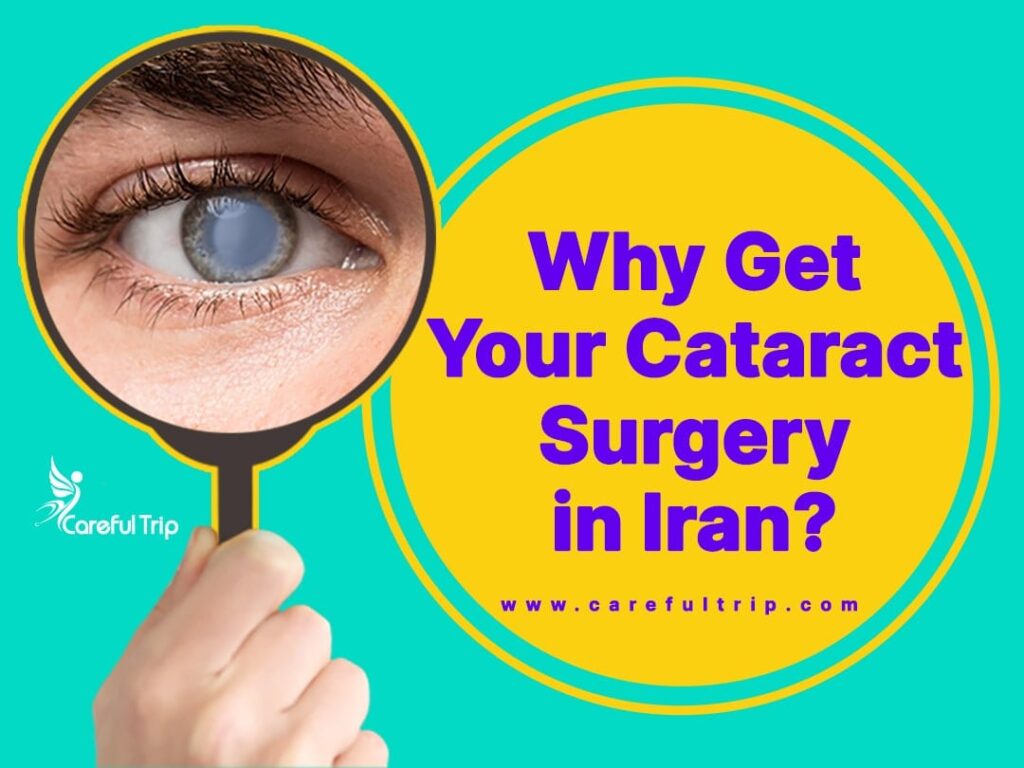
Cataract surgery is a transformative procedure in which the cloudy natural lens of your eye is removed and replaced with an artificial intraocular lens. As cataracts progress, vision can become blurred, and light sensitivity may increase, disrupting your ability to drive, read, or perform daily tasks. In Iran, cataract surgery is an outpatient procedure in state-of-the-art clinics, allowing patients to return home the same day. With highly experienced ophthalmologists and cutting-edge technology, most patients report a painless experience with minimal side effects.
Cataract surgery in Iran is increasingly popular among both domestic and international patients. The country’s expertise in ophthalmology, affordable pricing, and internationally accredited medical facilities make it a preferred destination for those seeking advanced, high-quality eye care. Whether your cataract is impairing your vision or complicating other eye conditions, timely surgical intervention can restore clarity and improve your quality of life.
When and Why to Consider Cataract Surgery in Iran?
Ophthalmologists recommend cataract surgery when the clouding of the lens significantly impairs vision. Common symptoms include:
- Fuzzy or blurry vision
- Increased sensitivity to light and glare
- Difficulty reading or recognizing faces
- Challenges with daily activities such as driving, cooking, or maintaining independence
Cataract surgery is also advised in some cases when other eye conditions—such as age-related macular degeneration or diabetic retinopathy—complicate your vision. Even if your cataract does not yet severely impact your daily life, delaying surgery may increase the risk of complications like elevated eye pressure or inflammation, which could lead to glaucoma or irreversible vision loss. The decision to proceed with surgery should be based on how much your vision affects your daily activities and overall quality of life.
For more information, read:
Optimal Timing for Cataract Surgery
There is no need to rush into cataract surgery if the condition is not yet interfering with your day-to-day activities. However, waiting too long can lead to additional complications. Consider having the surgery when:
- Your vision no longer meets the requirements for safe driving or work
- Daily activities such as reading, shopping, or household chores become challenging
- There is evidence of cataract-induced complications like increased eye pressure or early signs of glaucoma
Patients should not delay surgery if vision issues affect their independence or safety, as timely intervention is key to preserving long-term eye health.
When to Postpone Cataract Surgery
While cataract surgery is generally safe, certain situations may require postponing the procedure:
- Underlying Health Issues: If you have an acute medical condition that could complicate the surgery.
- Single-Eye Vision: When one eye is already blind, surgeons might wait until the vision in the other eye deteriorates further to ensure the benefits outweigh the risks.
- High Risk of Infection: Patients with active ocular infections or severe inflammation should resolve these issues first.
In such cases, your ophthalmologist will weigh the risks and benefits carefully and may suggest alternative treatments until you are a better candidate for surgery.
For more information, read:
Risks and Complications
Although cataract surgery is considered one of the safest procedures, there are potential risks, including:
- Inflammation and Infection: These can usually be managed with post-operative medications.
- Bleeding and Swelling: Temporary side effects that typically resolve with proper care.
- Drooping Eyelid and Retinal Detachment: Rare complications that require prompt medical attention.
- Dislocation of the Artificial Lens and Secondary Cataract: Issues that may necessitate further intervention.
- Glaucoma or Vision Loss: Very rare, but serious complications that underscore the importance of choosing an experienced surgeon.
Following all post-operative instructions and attending follow-up appointments are critical to minimizing these risks.
The Cataract Surgery Procedure
Cataract surgery in Iran is performed as an outpatient procedure and typically takes less than an hour. The process includes:
1. Pre-Operative Preparation
- Eye Drops: Your doctor will administer eye drops to dilate your pupil and numb the area.
- “These eye drops help prevent infection and reduce swelling during and after surgery.” – American Academy of Ophthalmology
- Sedation: Local anesthesia and sometimes a mild sedative are used to keep you comfortable during the procedure.
2. Surgical Process
- Lens Removal: The cloudy lens is fragmented using ultrasound (phacoemulsification) or removed via a small incision.
- Implantation: The natural lens is replaced with an artificial intraocular lens (IOL) carefully positioned above the iris. In rare cases, surgery may be performed without an implant if necessary.
3. Post-Operative Care
- Immediate Recovery: After surgery, you will be provided with protective eyewear, such as post-operative sunglasses, to shield your eyes from bright light.
- Medication: Specific eye drops are prescribed to prevent infection and control inflammation.
- Activity Restrictions: Patients are advised to avoid strenuous activities, heavy lifting, and exposure to water (swimming or hot tubs) for a specified period.
Recovery After Cataract Surgery
Recovery typically involves:
- Short-Term Discomfort: Mild redness and blurred vision may occur for a few days.
- Activity Modification: Avoid bending, heavy lifting, and strenuous exercise for the first week.
- Follow-Up Visits: Regular check-ups with your ophthalmologist to monitor healing and adjust medications as necessary.
- Protective Measures: Wearing sunglasses and avoiding dusty or polluted environments to prevent irritation.
Patients are generally advised to have a responsible companion drive them home after surgery and to plan for minimal physical exertion during the initial recovery phase.
For more information, read:

Why Choose Cataract Surgery in Iran?
Iran stands out as a world leader in ophthalmology due to its:
- Highly Trained Surgeons: Iranian ophthalmologists are internationally well-regarded and perform hundreds of cataract surgeries annually.
- Advanced Medical Facilities: Accredited clinics and hospitals meet international standards, ensuring safe and effective treatment.
- Cost-Effective Treatments: Cataract surgery in Iran is available at a fraction of the cost in Western countries, making it an excellent option for domestic and international patients.
- Innovative Techniques: Continuous advancements in surgical methods and post-operative care ensure high success rates and excellent patient outcomes.
Medical tourism facilitators like CarefulTrip work with top clinics such as Noor Ophthalmology Hospitals, ensuring that patients receive high-quality treatment and comprehensive support throughout their journey.
Final Words
Cataract surgery in Iran offers a modern, reliable solution for restoring vision and enhancing quality of life. With a focus on patient safety, advanced surgical techniques, and affordable pricing, Iran has emerged as a leading destination for cataract surgery. If cataracts compromise your vision or face challenges in your daily activities due to deteriorating eyesight, it may be time to consult an experienced ophthalmologist. Cataract surgery can significantly improve your visual function and overall well-being with careful planning, thorough pre-operative evaluation, and diligent post-operative care.
For more information or to schedule a consultation, contact a trusted medical tourism facilitator like CarefulTrip. Then, you can experience world-class eye care in Iran.
Sources
- Cleveland Clinic – Cataract Surgery: Recovery and How It Works
- Mayo Clinic – Cataract Surgery: Procedure, Risks, and Recovery
- American Academy of Ophthalmology – Cataract Surgery: Risks, Recovery, Costs

